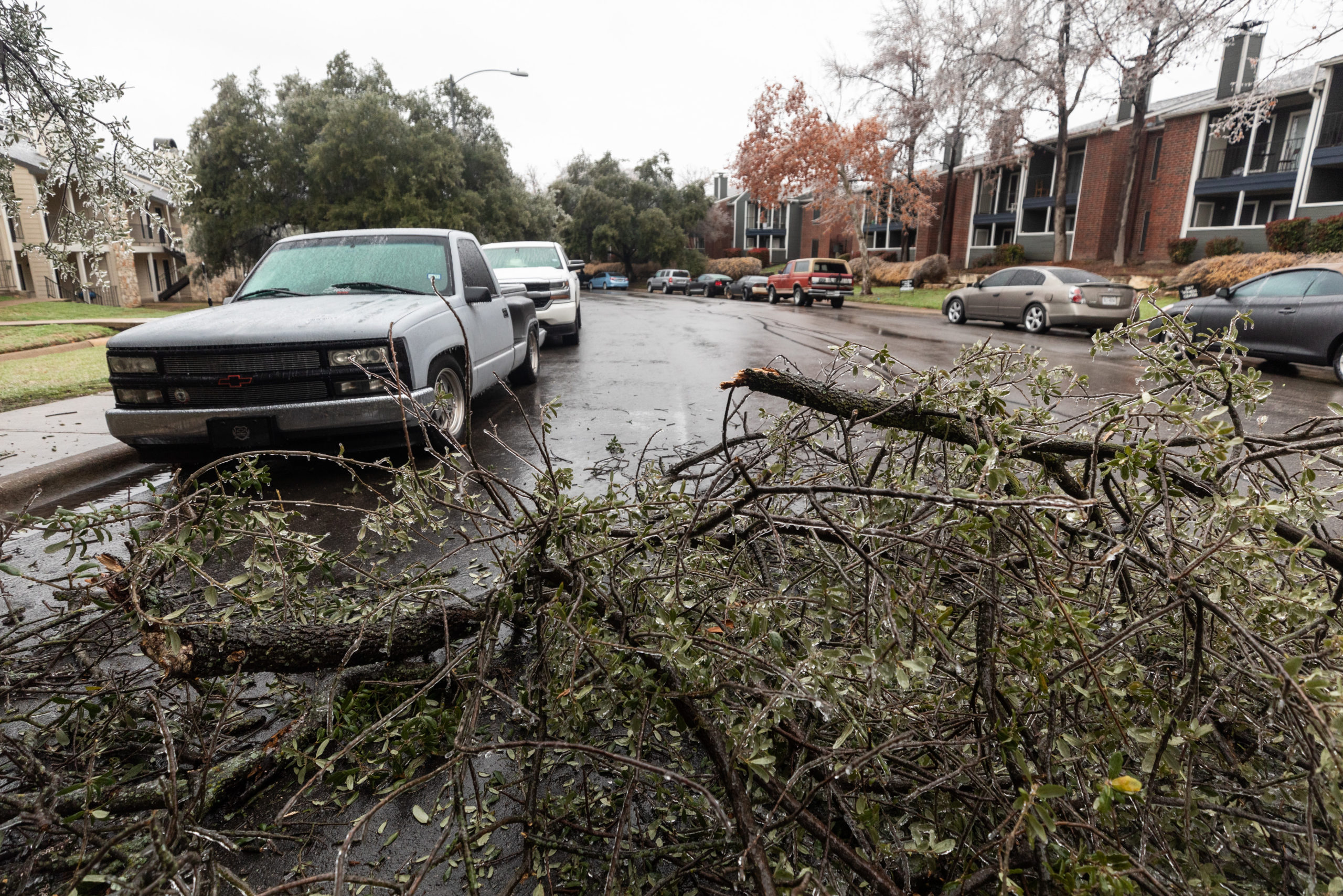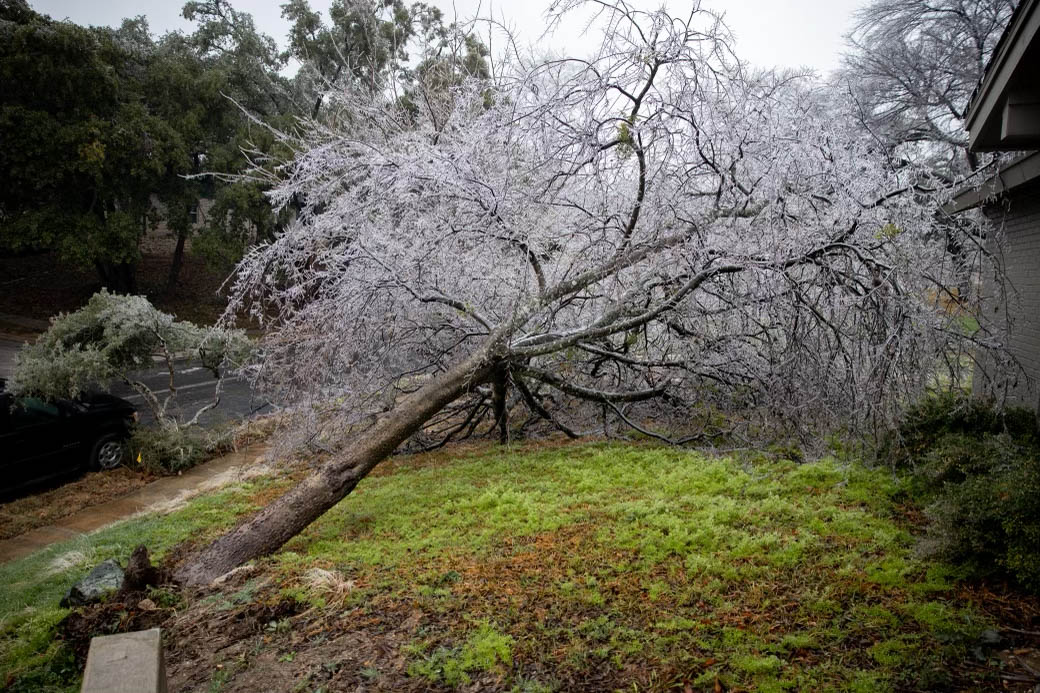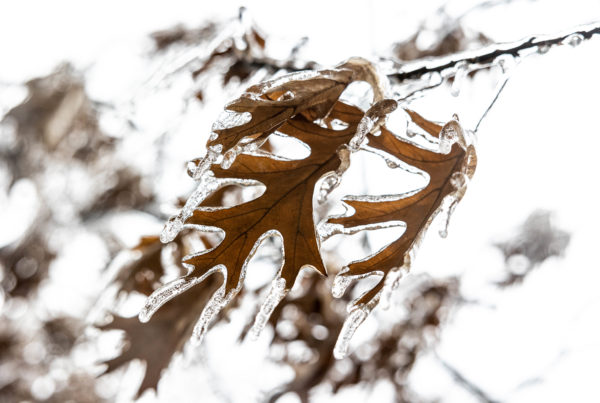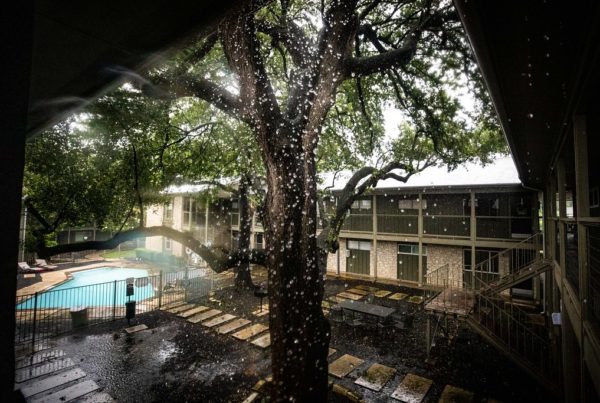For many Texans, the slog to recover from the first winter storm of 2023 has only just started.
There are the cars and trucks crushed by falling limbs, homes damaged by frozen branches and trees that snapped under the weight of the ice. Some can’t get out of their driveways or neighborhoods due to these obstacles.
There are lot of questions about how to pay for the mess left behind and how to deal with potential insurance claims. Many policies will vary in specific terms of what’s covered and what’s not.
Richard Johnson, director of communications and public affairs for the Insurance Council of Texas, joined Texas Standard to parse through some of the particularities.
Home and automobile damage
Johnson said that, unlike the 2021 freeze, we’re unlikely to see many burst pipes. Rather, the damage seems to have come mainly from falling trees – so auto claims and perhaps roof claims are more of the order. He mentions “ice dams” as something property owners might need to look out for.
“So as the water melts on your roof and then refreezes, it can actually work its way back up underneath your shingles and cause roof damage that way,” Johnson said.
For additional structures on your property, Johnson suggests consulting your policy and working with your agent.
“So if there’s damage done to the actual home, your structure, you may have some language in your policy as well that’s like ‘additional buildings,’” Johnson said. “So it might be considered like your fence or a shed or maybe you have a detached garage and your policy may cover damage done to that as well.”
Johnson also stressed that homeowner’s insurance would cover removal of a tree if it has fallen and is perhaps blocking a driveway, but would not likely cover tree removal if there was no damage done.
For automobiles, Johnson says a car’s comprehensive coverage should cover any damage done by a tree.
When should I document the damage?
Documenting the damage – whether it be through photos or video – is an essential part of filing a claim, but some might wonder whether any repairs made before doing so might jeopardize a claim. Johnson says best practice is to take a before and after, but to make sure repairs are done that might prevent further damage from being done.
“So let’s say a tree fell through and broke a window, you might want to tarp that up or put a board over it,” Johnson said. “So if it does rain before you can get somebody out to look at it, that rain doesn’t cause further damage. So that’s really the point there.”
Johnson also said many insurance companies now have an app or website where you can upload photos as an easy way to start a claim.
What about renters?
For renters, Johnson stressed that auto insurance is what would cover damage to a car from a fallen tree. Renters insurance comes in when it deals with personal belongings inside of a home.
“You know, there might be some theft things that happened inside your car that it may cover,” Johnson said. “But really, renters insurance is the personal belongings. And the damage to the actual structure, that would be your landlord’s or the property owner’s insurance or responsibility.”















